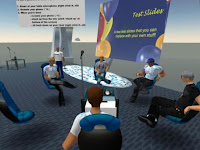Nowadays, we are among the possibilities produced by the globalization process, so that the connection of the world is everyday much big and keeps on growing. Communications are a huge part of this interdependence, and this is not only in terms of business, which represents highly the globalization, but also what occurs with our lives. Our activities, jobs, plans are correlated to communications, and all these things must be harnessed by the humanity.
Inside organizations, it exists the interpersonal communication, which is the base of a relationship and involves lots of elements like, the communicator, the receiver, the perceptual screens, and the message. There are also issues like the noise, encode, decode and feedback, that play an important role in the way individuals communicate.
In relation to the concept above and the approach used by the manager, it may be expressive speaker, in which managers peacefully express and share their thoughts.
Emphatic listeners; in who leaders focuses on the other. Persuasive Readers; who they try to promote interest in others to achieve a goal. Sensitive to feelings Readers; who they try to take critical perspectives that enable them to negative feedback in a confident way. Also, informative managers must be willing to maintain open communication with employees.
Nevertheless, to make this useful for organizations, leaders must take into account to maintain an effective communication, and the exactly approach to achieve it, it is by handling some principles of effective communication, which are: Clarity, a specific objective (purpose of the message), full understanding, Consistency, Completeness, Feedback and Time.
Virtual teams, within the organization are the workplace with open flexibility and other capacities to members and leaders, but they demand strong coordination and good communication, and some advanced technology.
A virtual team successful depends on its capacity to maintain and sustain through time, space, and cultural differences and with the total acquisition of a unique objective to create a common framework of effective collaboration.
Question
According to Kuruppuarachchi (2009), what benefits and problems arise as a consequence of the creation of virtual team? Identify five each. Based on this, explain how to make the transition from a more traditional team structure to the more distributed team structure?
Benefits:
1. Improved productivity and reduced costs by technological means
2. Competitive advantages and value inside organization
3. Improvement in terms of customer service and satisfaction
4. Better skilled and qualified employees not matter the dispersion
5. Different approaches of business processes
Problems:
1. Ineffective communication, because of nonverbal communications methods
2. Not standard goals for different team members
3. The dependency on the speed of all processes
4. Structure and separation economical costs
To achieve virtual distributed structure team, the team itself needs to build own environment in which they feel unified and entering relevant means of communication in order to create a efficient approach and reach a real connected and aware team networking.
Besides, to ensure a control of different operations the virtual team needs adopt constant and committed monitoring, which does not tie the team to a standard operation method, if so that provides unique and clear goals and activities to follow.
1) Images Retrieved from google images
2) Michael Spencer. “If intercontinental were sound… what would it be?” Journal of Business Strategy. Vol 31. P 39-46
3) Kuruppuarachchi, Palitha R. 2009. “Virtual team concepts in projects: a case of study” Proyect Management Journal 40, no. 2:19-33



No hay comentarios:
Publicar un comentario